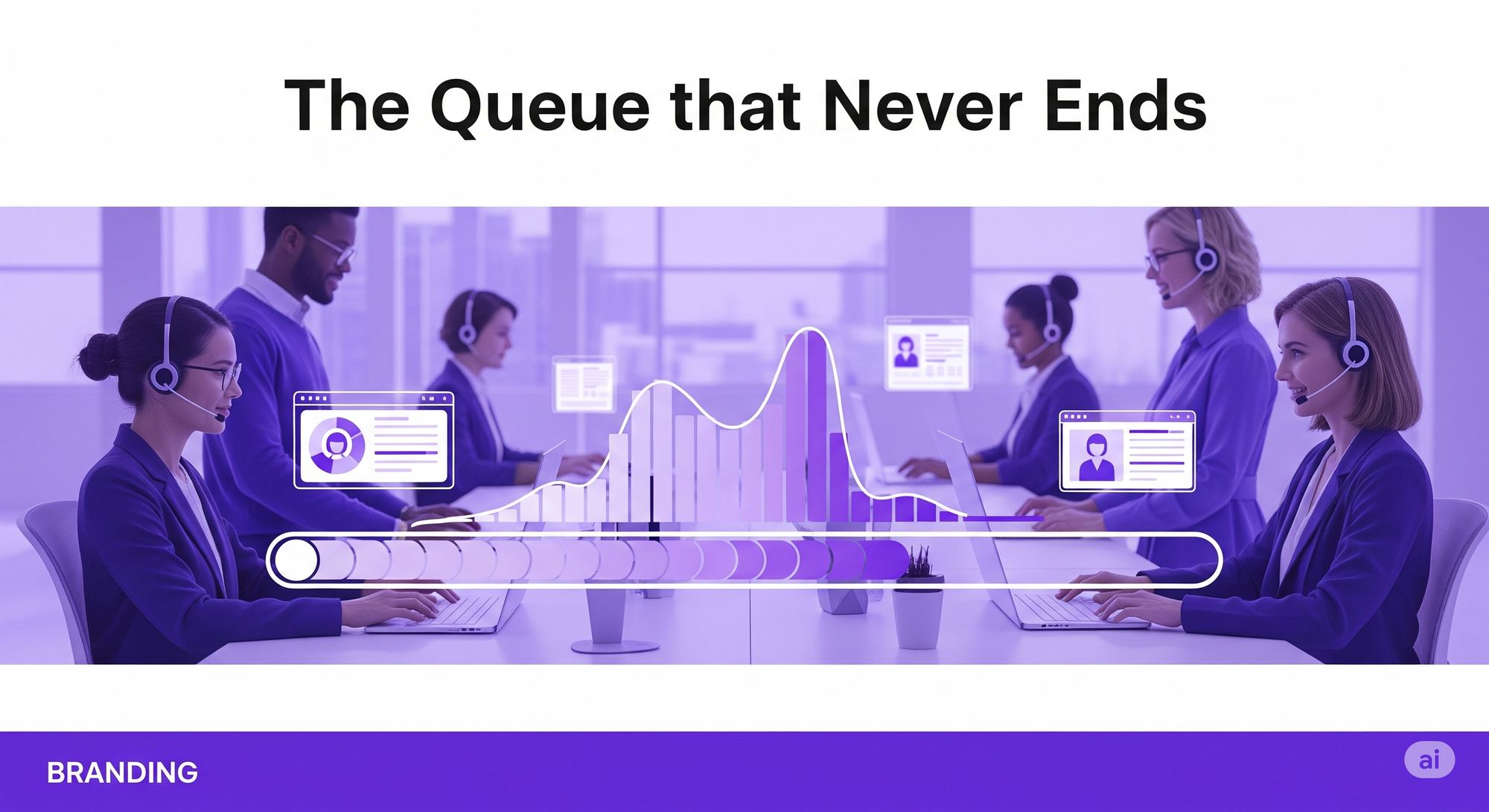The Zero-Inbox Journey: How Support Moves from Reactive to Strategic

The Queue that Never Ends
Every day, support teams work through full queues - only to see them refill by the afternoon.
The volume isn’t random. It’s the same issues, asked in different ways, over and over.
This isn’t a failure of effort. It’s a sign that too much time is spent responding and too little spent removing the cause.
When ticket volume becomes predictable, it’s no longer just an operational concern, it’s a product and customer experience signal.
Moving From Ticket Handling to Root Cause Elimination
The most efficient teams shift their mindset:
They stop treating the queue as a productivity benchmark and start using it as a diagnostic tool.
Data usually shows that a small set of problems drives the majority of cases. For example:
- Vague error messages
- Gaps in onboarding
- Misaligned expectations during purchase
Rather than scale headcount to keep up, high-leverage teams focus on permanently eliminating those top case drivers through collaboration with:
- Product (to refine UX and flows)
- Engineering (to address systemic bugs)
- Documentation and Enablement (to improve self-service)
- Sales and Success (to align pre-sale messaging)
This approach turns Support into a catalyst for structural improvement.
What the Business Gains from Proactive Support
Reducing inbound volume isn’t just a team-level win. It creates measurable outcomes across the company:
Business Benefits
- Lower support costs per customer
Less volume means fewer hires, better margins, and more scalable operations. - Faster time-to-value
Customers onboard with fewer blockers, leading to quicker activation and retention. - Product development with real-world insight
Support surfaces urgent friction points, giving Product teams fast, actionable feedback. - Improved internal alignment
With clear insights from Support, Engineering, Success, and Product work toward the same customer goals.
What the Support Team Gains
Support becomes a better place to work, and a better place to grow a career.
Team Benefits
- Fewer repetitive tasks
Agents shift from reactive triage to meaningful problem solving. - Higher job satisfaction
Seeing real impact, from fewer escalations to product improvements, makes the work matter more. - New skill paths
Agents contribute to cross-functional initiatives in QA, UX, training, and more. - Greater team efficiency
Cleaner queues allow better planning, specialization, and less burnout.
What Customers Experience When Support Works Strategically
When top issues are resolved upstream, customers notice the difference:
Customer Benefits
- Fewer frustrating moments
Issues that used to require contact simply don’t happen anymore. - Faster onboarding, less confusion
Customers get unblocked quickly and reach value sooner. - Improved trust in the product
When feedback leads to real fixes, confidence grows. That builds brand loyalty.
How This Powers Sales and Expansion
A better support experience isn't just about retention, it helps accelerate growth.
Revenue & Expansion Benefits
- Stronger renewal conversations
Smooth experiences reduce frustration and give Customer Success more to celebrate. - Increased upsell readiness
When the product “just works,” customers are more open to adopting advanced features or additional modules. - Sales enablement
A proactive support model becomes a competitive differentiator:
"We don’t just respond to issues, we remove them before they reach you." - Fewer internal escalations
Sales and Success teams spend less time putting out fires and more time driving outcomes.
Building a Sustainable, High-Leverage Support Rhythm
To avoid slipping back into reactive mode, top-performing teams adopt a monthly loop:
- Analyze top ticket drivers
- Identify issues that can be eliminated or reduced
- Engage with the right stakeholders to fix them
- Share outcomes and measure changes
- Adjust the focus as new patterns emerge
This rhythm makes Support an internal thought partner, not just a queue processor.
Zero-Inbox as a Company-Wide Growth Strategy
“Zero inbox” is not about emptying the queue for the sake of optics.
It’s about preventing the queue from filling up in the first place, because the product, process, or message is better.
This approach transforms Support into a force multiplier:
- For customers, it improves outcomes and trust
- For teams, it creates focus and momentum
- For the company, it increases margin, clarity, and expansion potential
In this model, Support doesn't scale by doing more. It scales by doing less of the wrong work, and helping the entire business do the right work.

